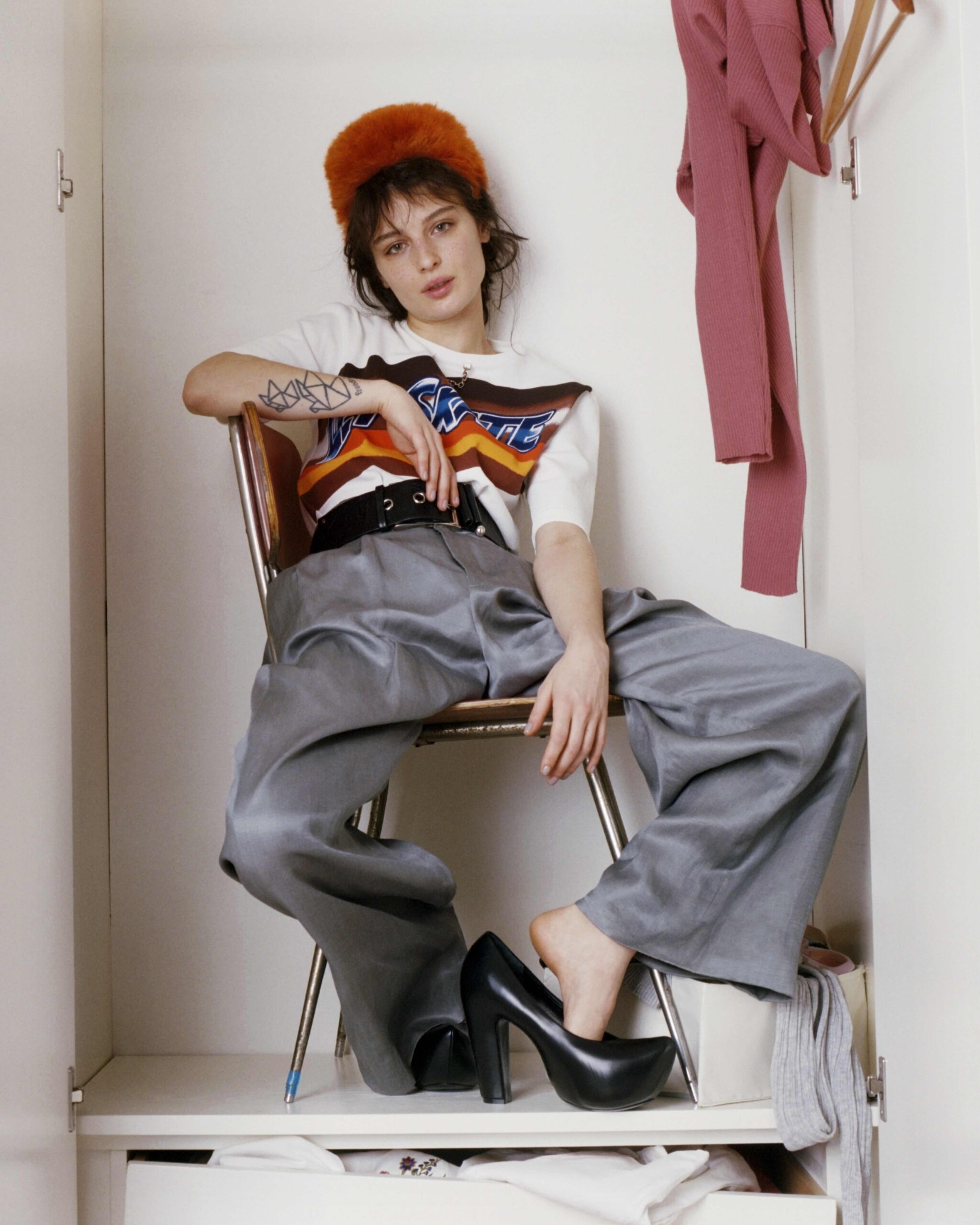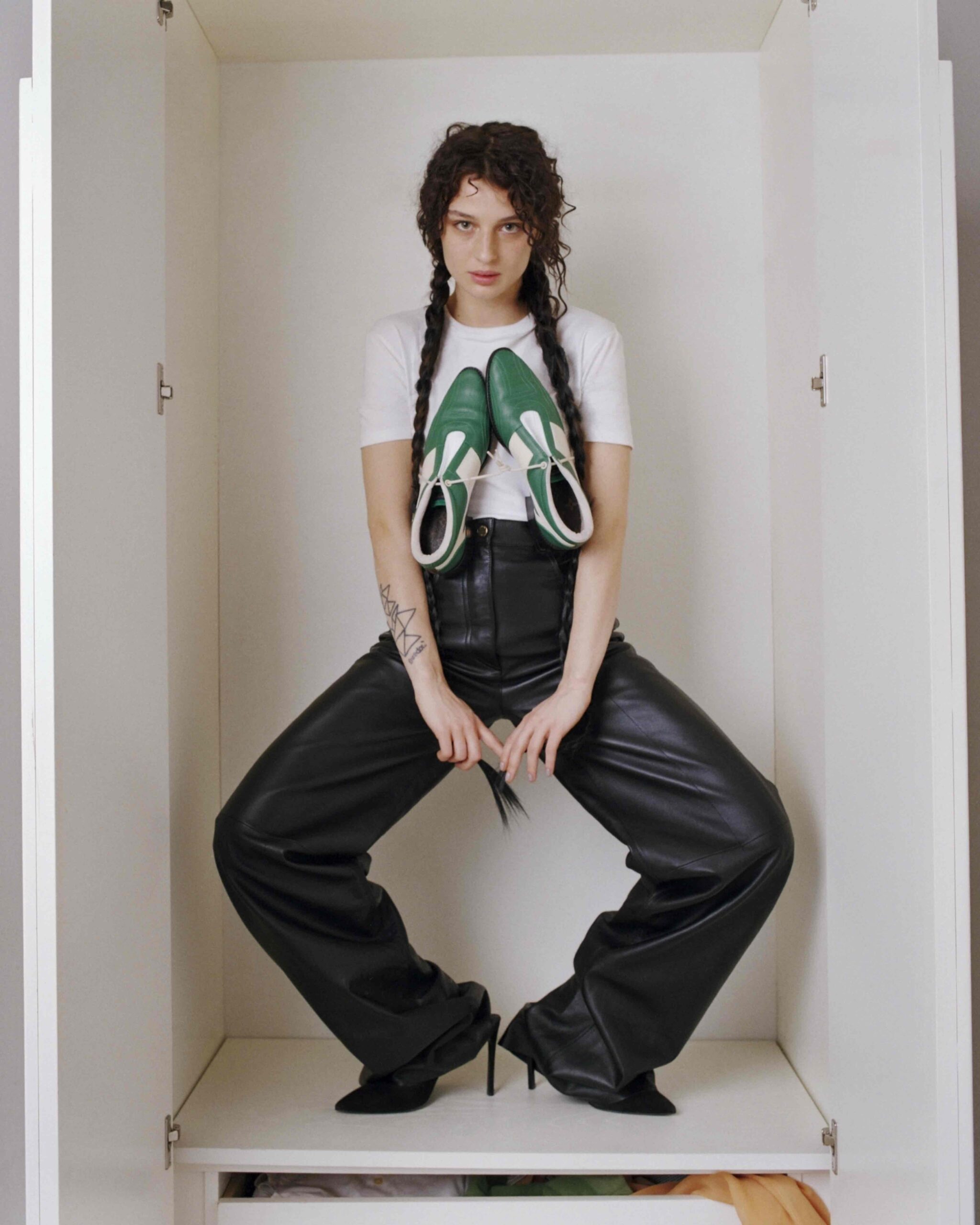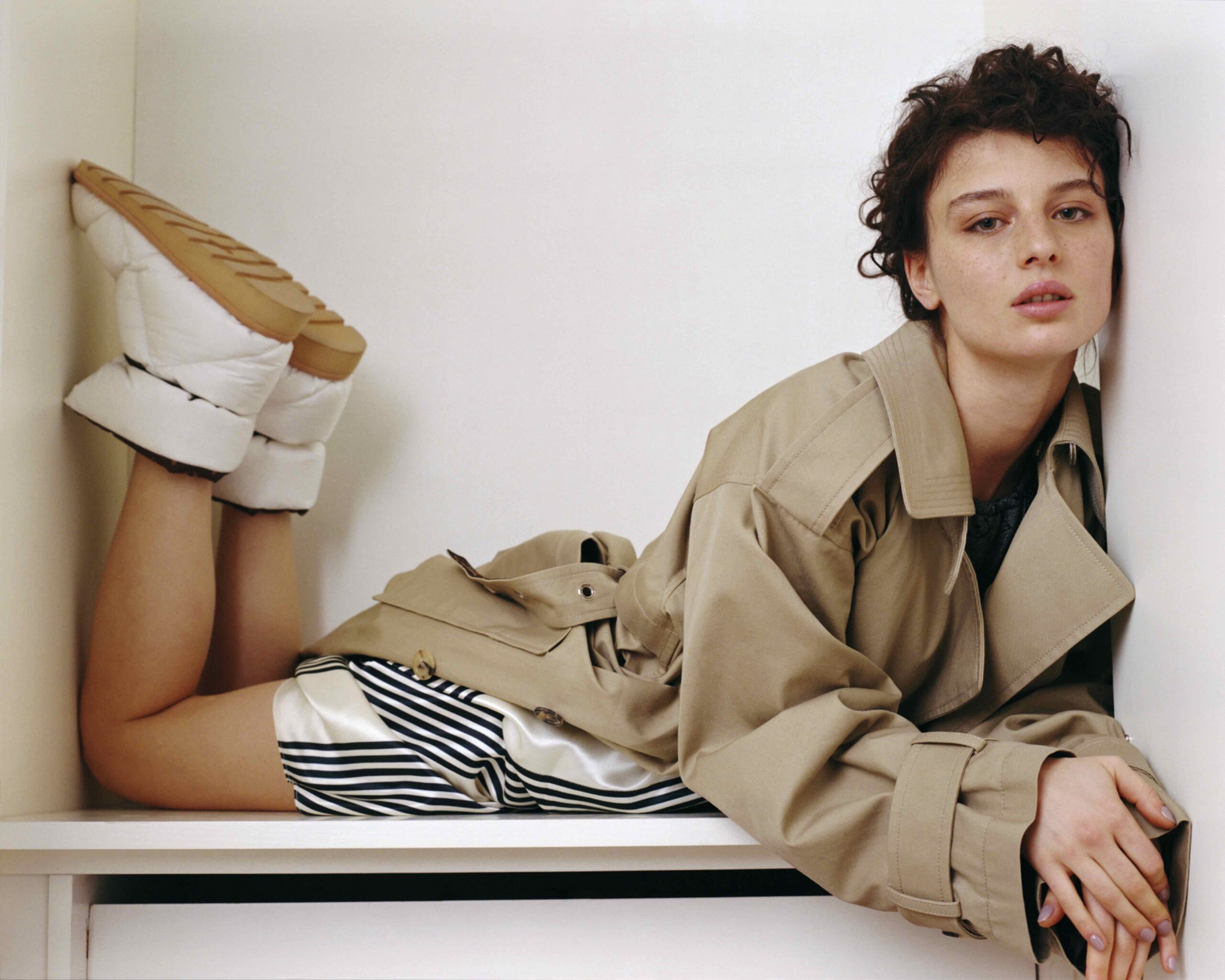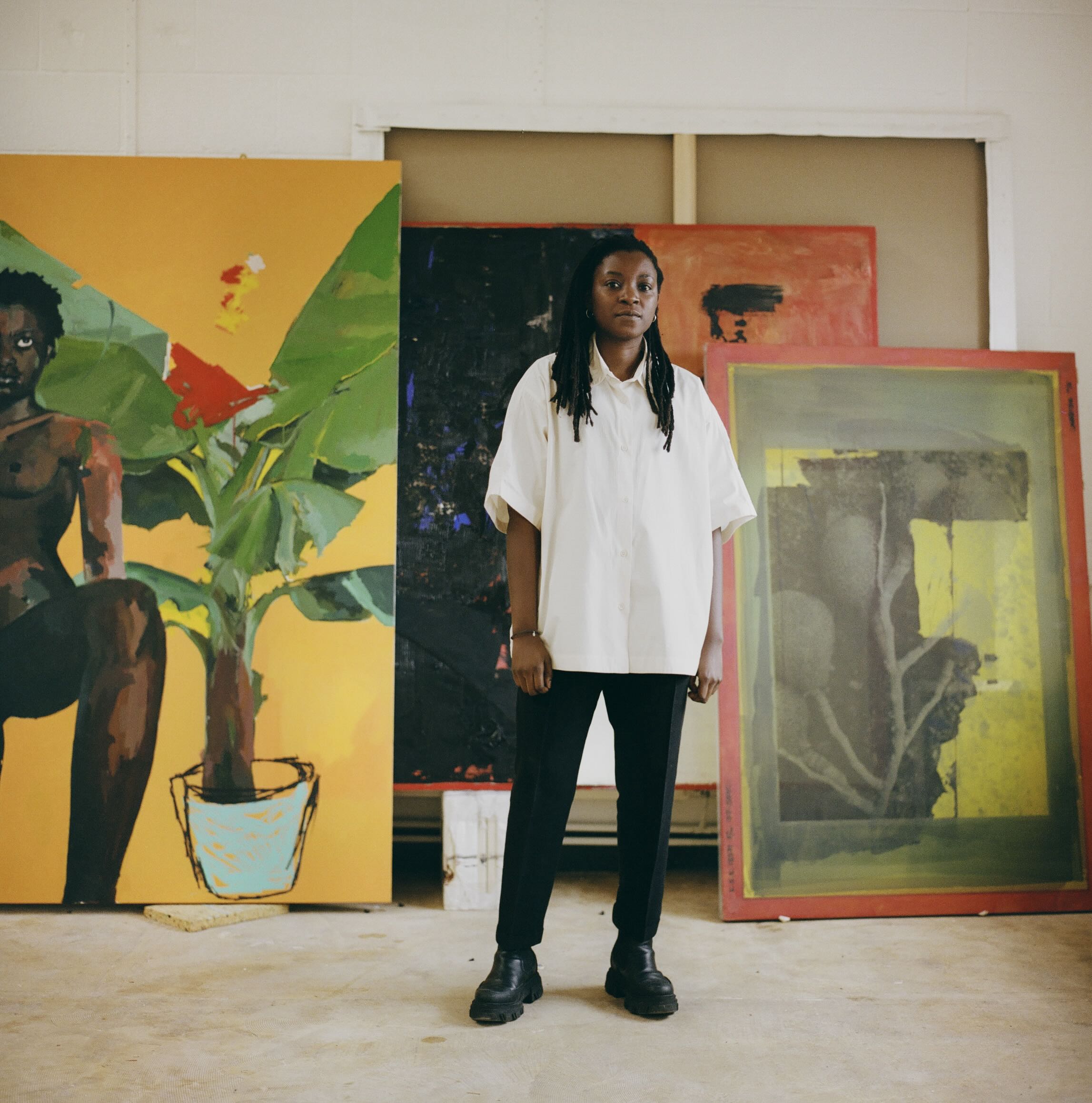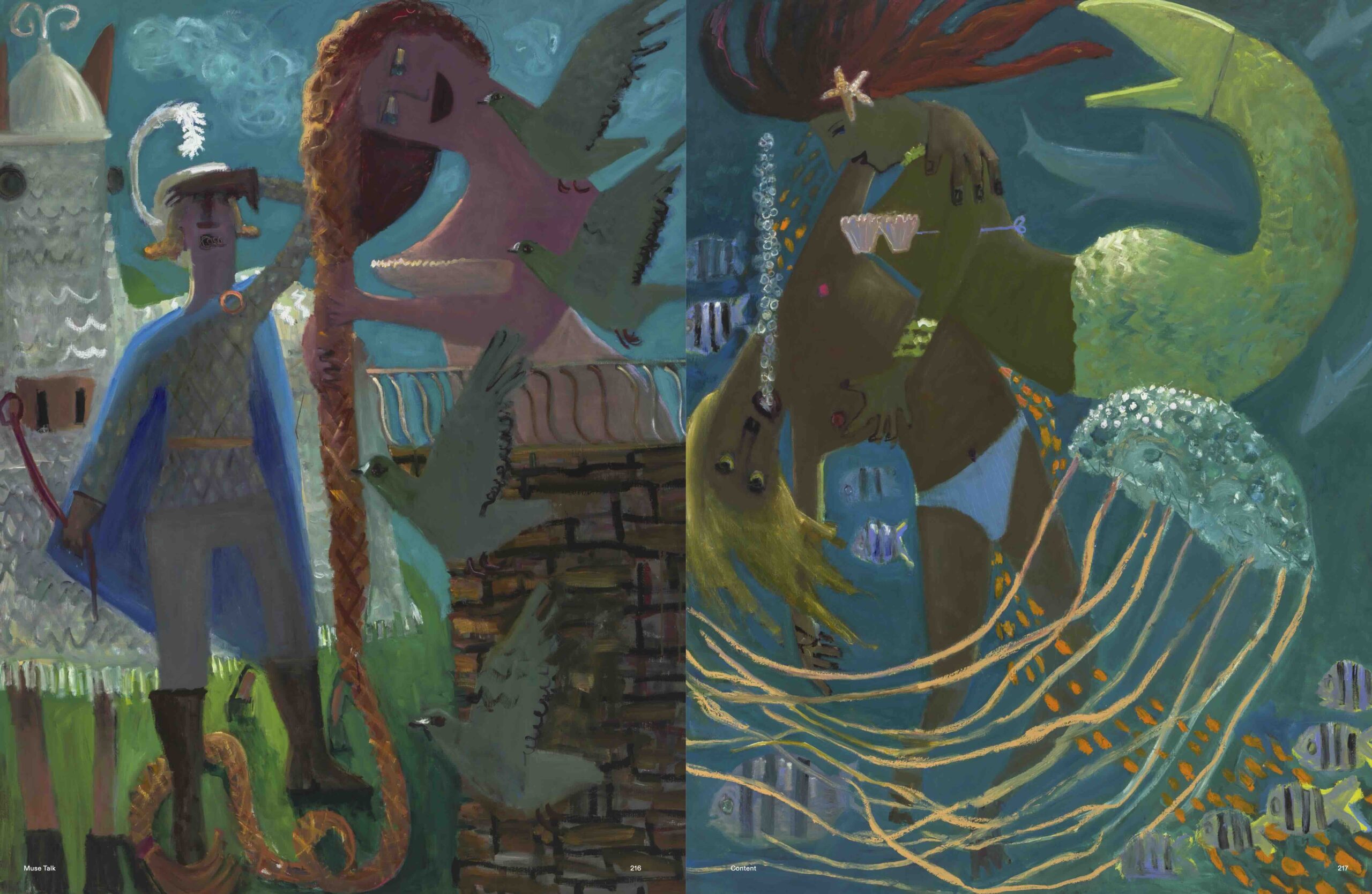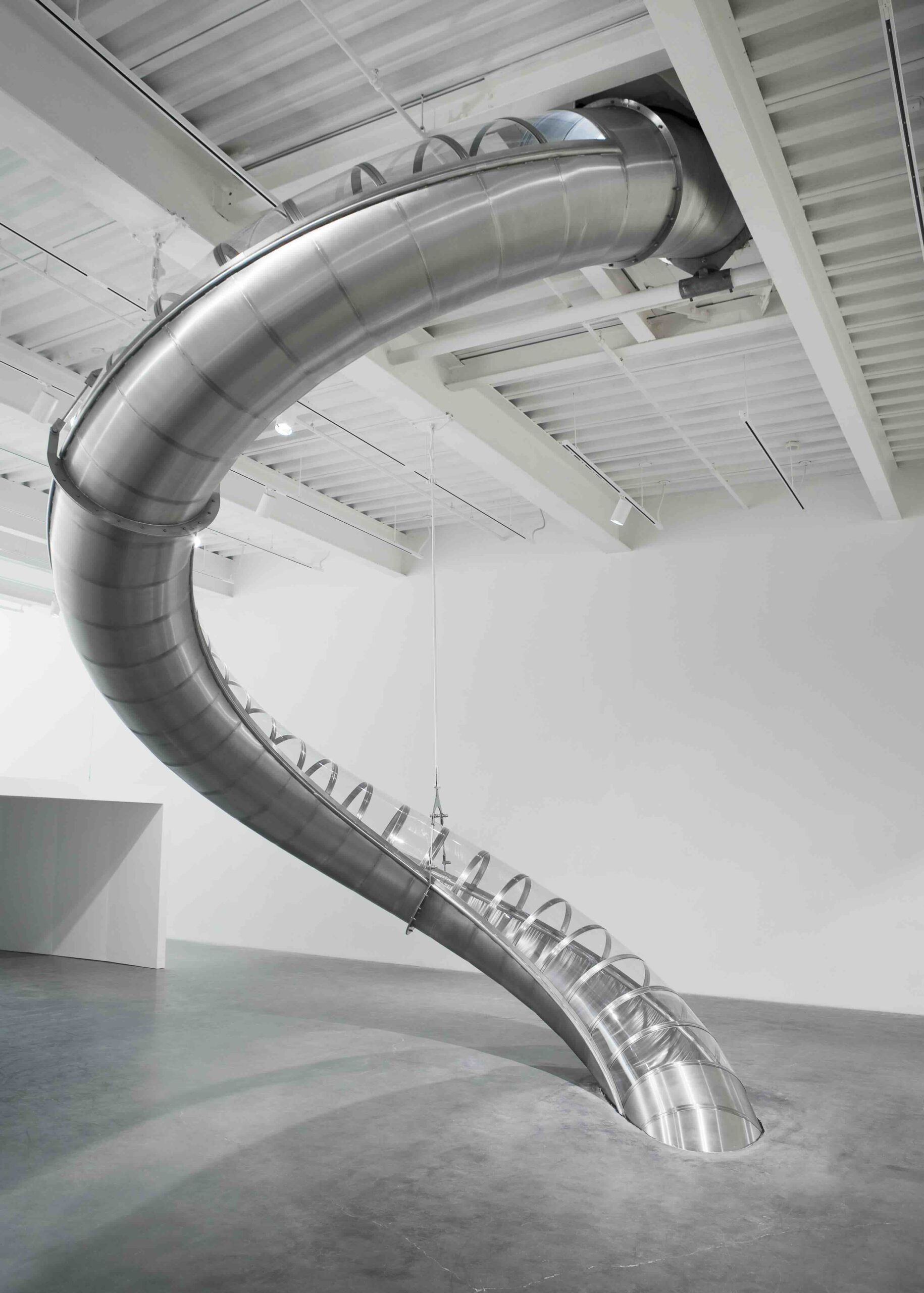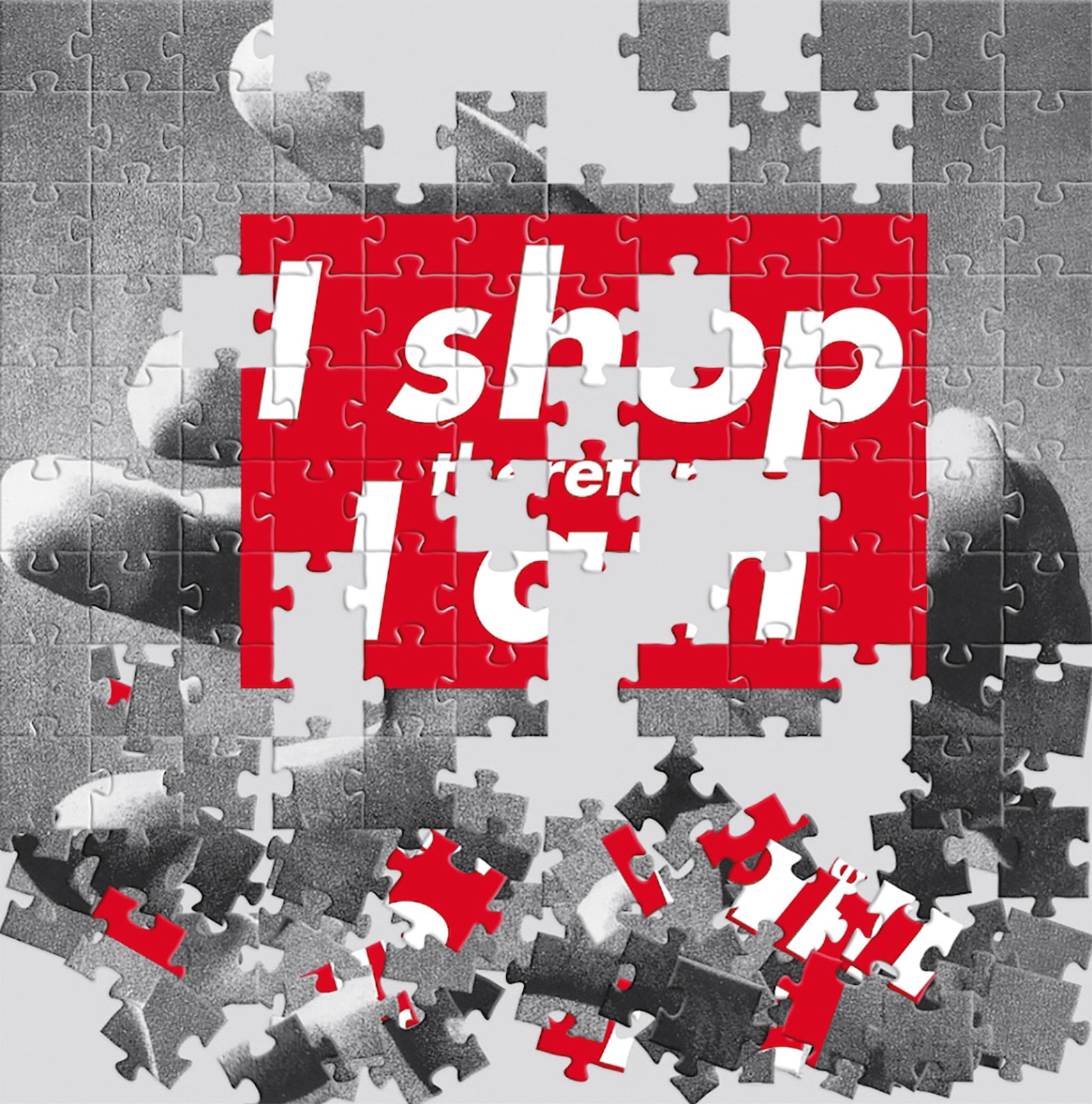Alice in conversation with Elisa Ambrosetti.
The glance is all it takes, perhaps one of the first features grasped and discerned by a director. I thought it was a trivial observation, but meeting Alice Pagani’s deep and magnetic glance as she arrived on set, in Rome, wearing boots and a hoodie in a pure 90’s grunge style, definitely changed my mind.
Those yellow-green eyes of hers, her secret weapon, won over Directors such as Paolo Sorrentino, who chose her for his films Loro 1 and Loro 2, and Andrea De Sica for his Netflix series Baby, and for his upcoming romantic horror film Non mi uccidere.
I listen to her talking to the make-up artist about her freckles, about her “Ludovica” bob that she’d love to soon go back to “because mom always wanted me
this way”, she says as she shows us a picture of herself as a child.
The make-up artist is highlighting her freckles, which are a bit shyer in January than they are in the Summer. She’s smiling at me now, a genuine smile. I think she noticed that I’m observing her, so intensely that she
asks if we’ve met before. I reply that we haven’t, but that we’ll get to know one another better during our long chat…
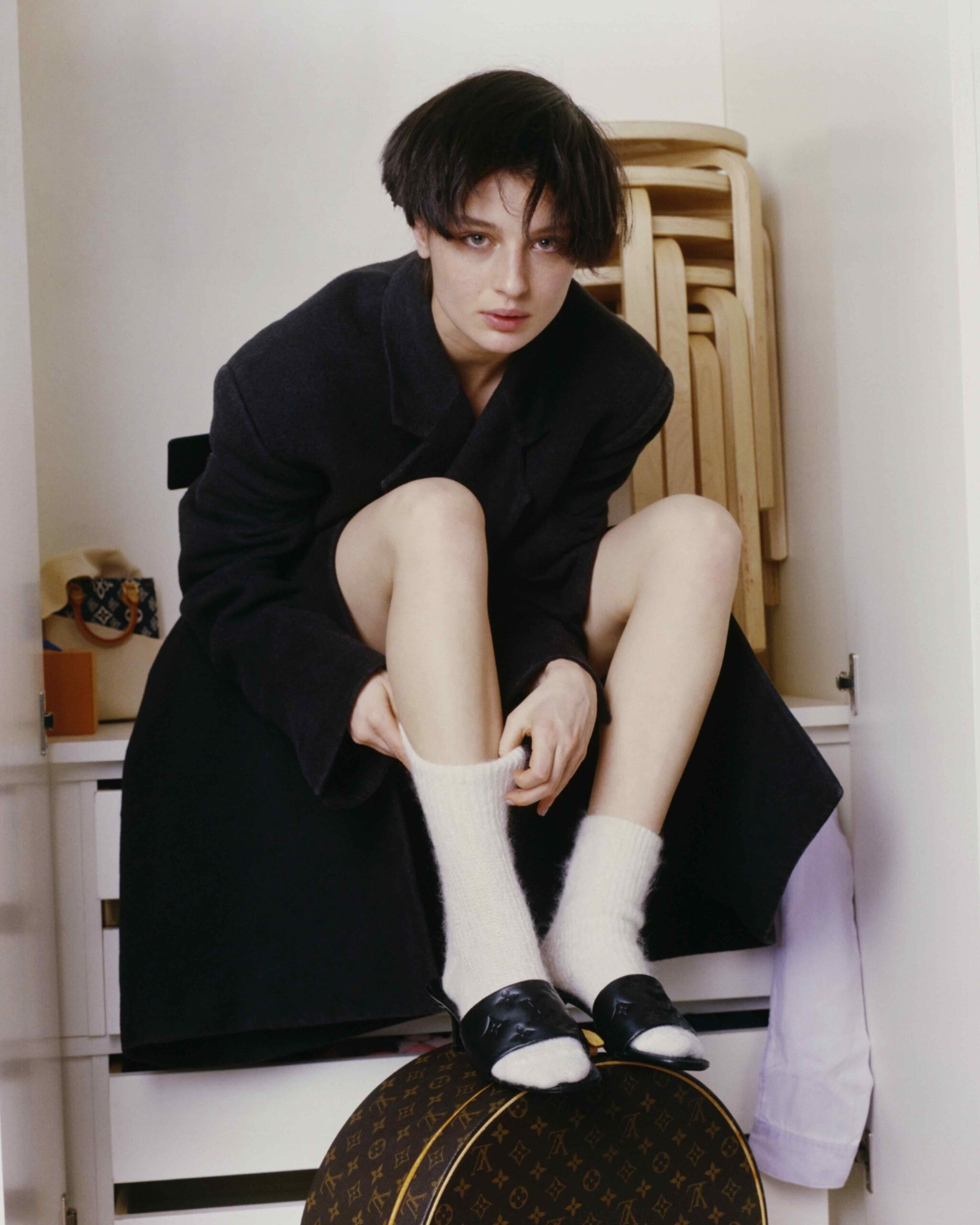
I’ve been a fighter ever since I was little. Nothing was ever handed to me and I had to fight for everything I have. I had to choose and make decisions. I had to fight with myself more than anything else: I had a battle to win within myself, wanting to grow, feeling at ease in my space, being able to control my reach. It took me some time to do that, to be able to give direction to my character without it taking over me, to go beyond what’s written in the script, and to understand what more I can bring to it.
